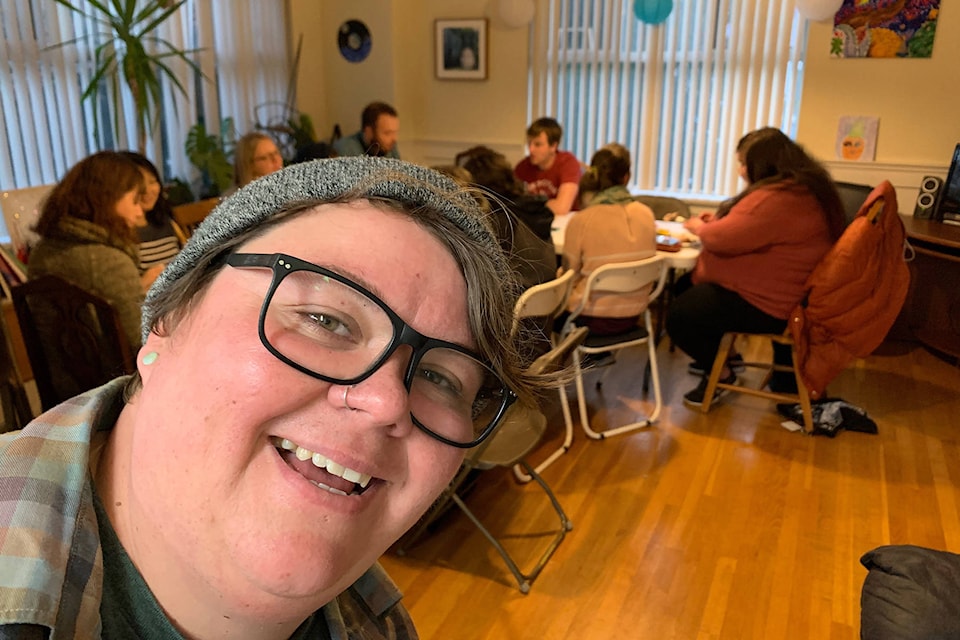Shalu Mehta/News Staff
Safe housing, while a luxury for some, is something more than 150 youth in the region don’t have access to with not enough shelter beds and an affordable housing crisis exacerbating the issue.
“Safe housing is a place where you can have some privacy, separation from the outside world as you desire, and avoidance of things like overcrowding and being around behaviour or activities that make you feel unsafe,” said Colin Tessier, executive director of Threshold Housing Society, a Victoria organization that aims to support youth and help them find safe housing. “It’s a place where a young person feels they have support and healing and can grow from.”
Tessier said many of the youth experiencing homelessness in the region, and those who work with the organization, come from precarious and often dangerous or unhealthy situations. They’ve likely been through a lot of transitions in their life and even find themselves in situations where they’re being abused. Their at-home situations become so dire that they start to search for other options to avoid being traumatized any further.
“There are youth who sleep on our streets every night and it’s more than a couple. It’s a hidden homeless scenario but they’re just trying to find a place to rest their head at night,” Tessier said.
Sofia, a youth accessing programs through Threshold who does not want her last name used out of fear for safety, felt she had no choice but to leave her home three years ago.
She said tension from her parents made her home an unsafe environment. She said she was limited in what she was allowed to do, wasn’t allowed to have friends, couldn’t get a job and wasn’t allowed to leave the house. Her parents kept her B.C. services card away from her so she couldn’t access mental health support over the phone so she turned to the internet.
READ ALSO: COVID-19: Coming months will reveal fate of Greater Victoria’s rental market
When she was allowed to use the computer, she used it to access online counselling services and to look up ways to treat herself. Eventually, an incident at home led to her being able to access a psychiatrist over the phone.
“I didn’t see her too often but it was worth it,” Sofia said.
Her psychiatrist ended up connecting her with Threshold, where Sofia was able to access housing in one of their group homes.
“I was looking at homeless shelters but this seemed like more of a long-term solution,” Sofia said. “I just couldn’t achieve my goals at home and I felt stuck. I knew what I had to do but I was scared to take the next step.”
Sofia moved out at the age of 17, leaving her siblings and parents behind and cutting off contact with them. Now, at the age of 20, she’s living on her own in Threshold housing and is studying psychology at the University of Victoria.
“When I moved to Threshold the freedom felt really nice,” Sofia said. “I got a skateboard and constantly skateboarded everywhere. It was a fun way to cope.”
Now, as she gets older, Sofia is looking to transition out of Threshold and find a place to live but is worried she won’t be able to. With median one-bedroom apartment costs in Victoria sitting at about $1,600 a month, affordability is an issue. She said she feels young people are also discriminated against when applying for rentals. She doesn’t have any previous references outside of Threshold and said she worries that her applications will be disregarded.
“Victoria has a low vacancy rate that drives up prices and pushes marginalized populations even further out,” Tessier said. “There is racism and discrimination that permeates the housing market and also discrimination against those in poverty or who lack resources.”
READ ALSO: Victoria’s median asking rent for one-bedroom hits $1,600
According to a statement from the Ministry of Municipal Affairs and Housing, options are being built for youth experiencing homelessness in Victoria. Currently, B.C. Housing funds 63 units of supporting or special needs housing for youth in the Capital Regional District as well as 30 temporary shelter spaces designated for homeless youth in Victoria. The housing provider is continuing to work with partners to identify housing options for vulnerable youth.
Youth transitioning out of foster care are also a priority group identified by BC Housing’s Homeless Prevention Program.
“It’s unacceptable for any youth to have to spend a night without a home or in search of a stable place to live in order to feel safe,” the statement said. “We agree that more needs to be done to address youth homelessness and agree that a cross-government, provincial response is required.”
Tessier said that while he’s grateful for Threshold’s partners and the various ministries they work with, youth homelessness is a wider, societal issue.
“One of the heartbreakers is that this is the system that creates long-term, adult homelessness,” Tessier said. “We need to strengthen our system, fill those gaps and find opportunities so more young people have the opportunity to change their life.”
-with files from Nina Grossman
This Black Press Media series will take a look at different factors of youth homelessness in the region. This is part three of the four-part series.
